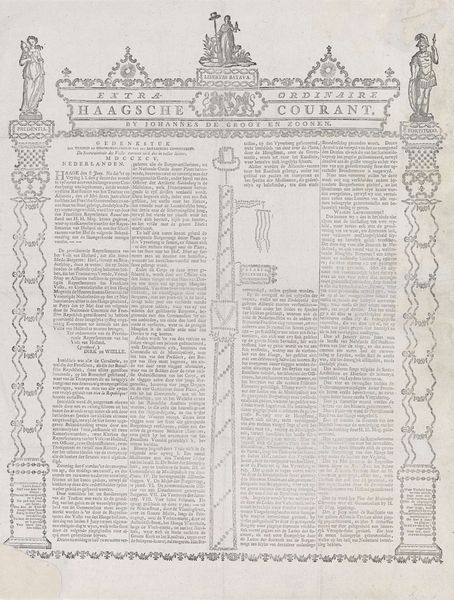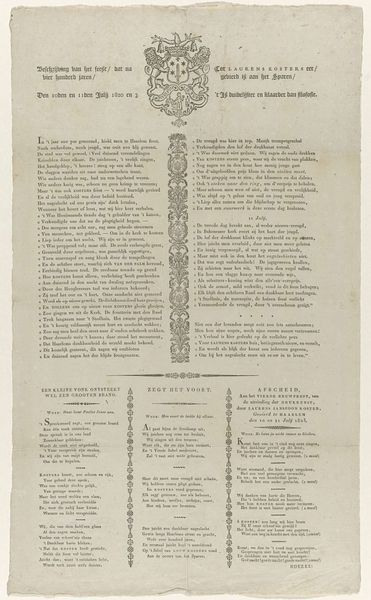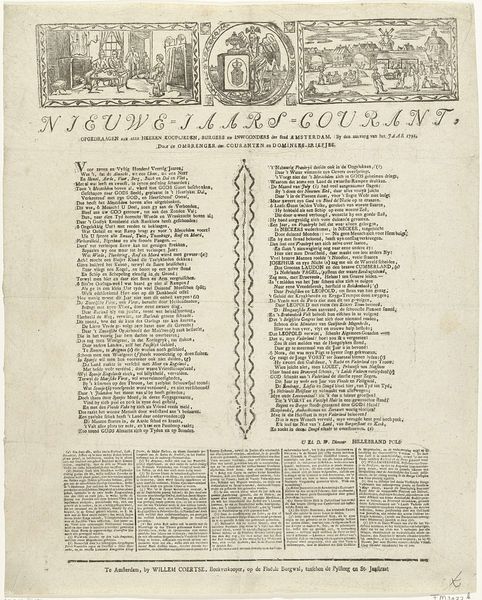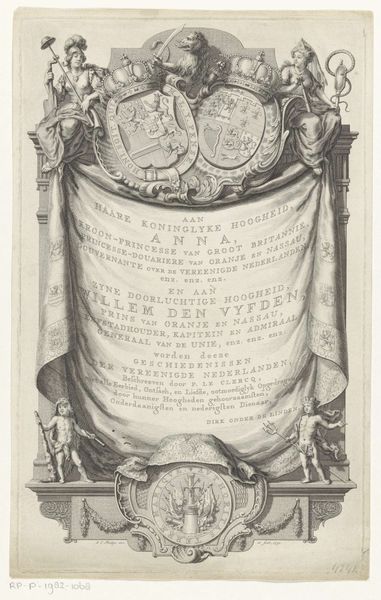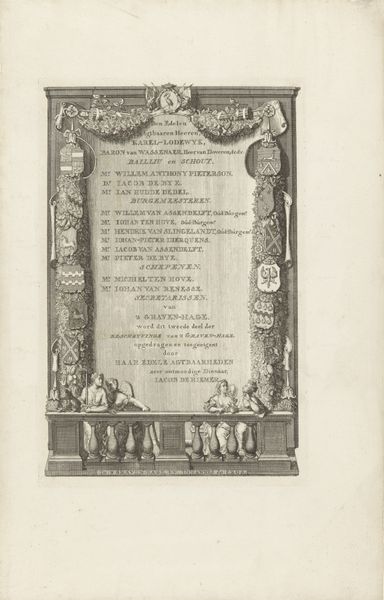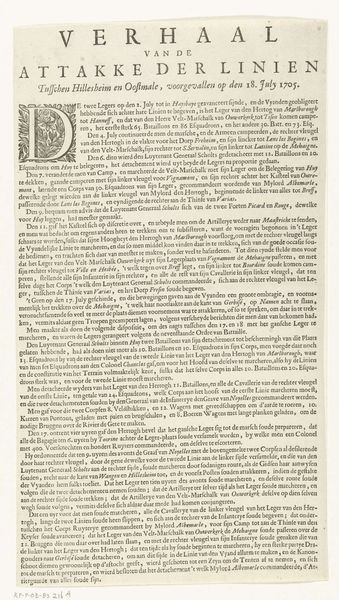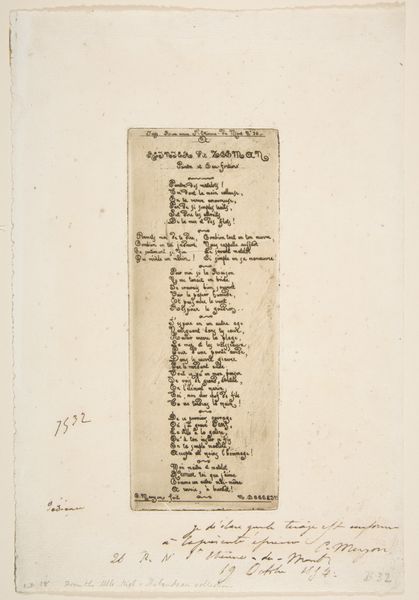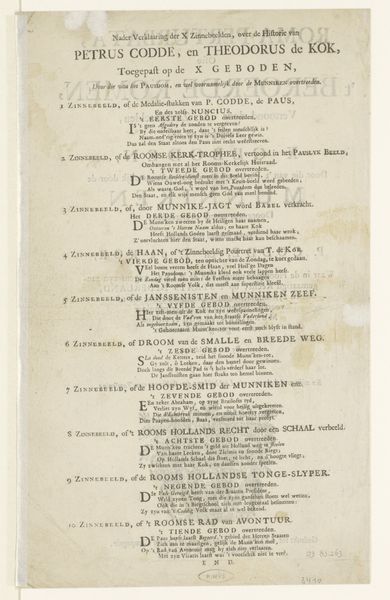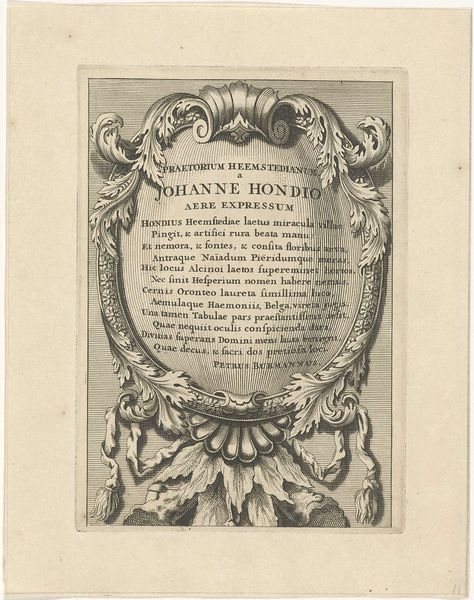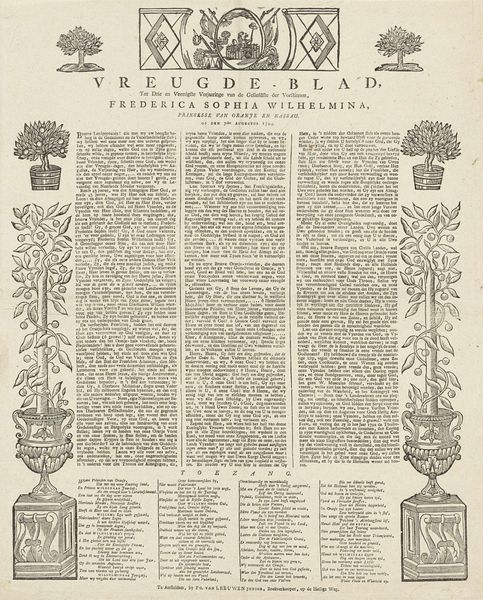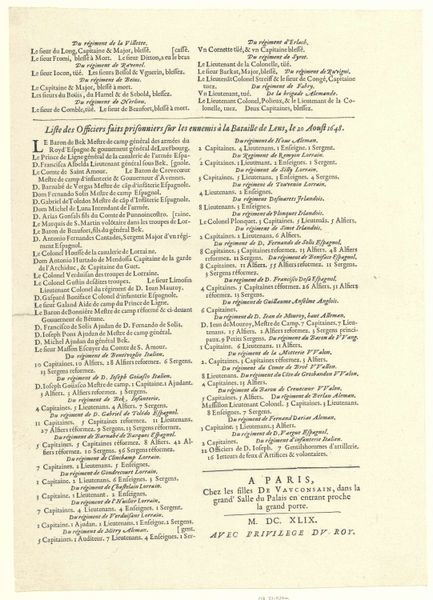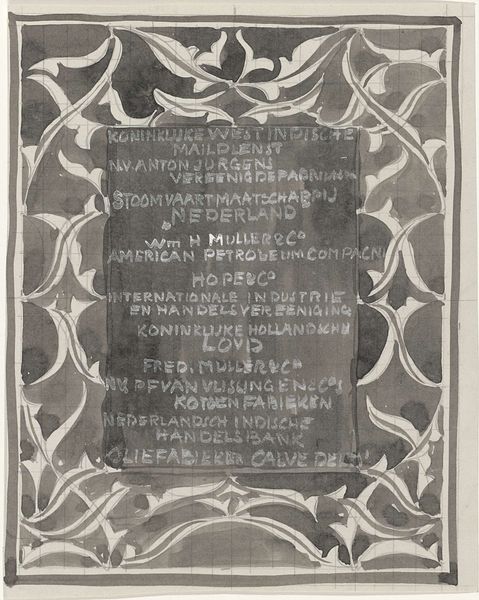
Grafschrift gericht tegen de bedervers van Nederland, 1784-1785 1784 - 1785
0:00
0:00
Dimensions: height 394 mm, width 301 mm
Copyright: Rijks Museum: Open Domain
Curator: So, here we have "Grafschrift gericht tegen de bedervers van Nederland, 1784-1785," a print, engraving, and textile work from the Rijksmuseum attributed to an anonymous artist. What are your initial thoughts? Editor: Well, it’s overwhelmingly dark, almost monochromatic. The text is densely packed, and it feels like a somber announcement or perhaps a political statement of some kind. How do you interpret this work? Curator: The darkness itself speaks volumes. Considering its creation in the 1780s, this print likely engages with the political turmoil of the Dutch Republic. The "bedervers van Nederland" – corrupters of the Netherlands – suggests internal conflicts and anxieties about national identity. We should ask ourselves, what were the specific societal anxieties and power dynamics at play that this work might be addressing? Editor: So, the text isn't just a description but an indictment? A call to action or resistance against something specific happening at the time? Curator: Precisely. Think about who Johan Derk, Baron van der Capellen, was. He was a patriot, a progressive nobleman critical of the stadtholder's regime. This "Grafschrift," or epitaph, isn't just mourning his death, but leveraging it as a rallying cry against perceived corruption and oligarchy. Do you notice the baroque style's dramatic flair even within this somber context? Editor: Yes, now I see it. The intricate borders, even in their darkness, seem to amplify the intensity. I hadn't considered how the artistic style itself could contribute to the overall political message. Curator: Exactly! It’s not just about aesthetic preference, but how the artist uses established forms to amplify dissident voices within that society. So what did you learn from that? Editor: That even in mourning, art can serve as a powerful act of defiance. It is also useful to delve into historical context so the meanings are enriched. Thanks for the conversation. Curator: Thank you. Recognizing art’s interwoven roles between social criticism and expressions of loss gives artwork its true power.
Comments
No comments
Be the first to comment and join the conversation on the ultimate creative platform.
